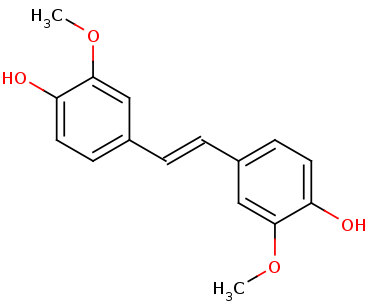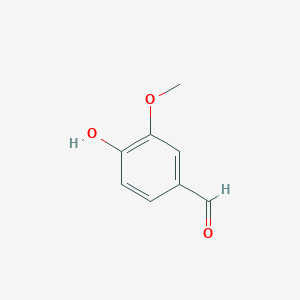Sandbox Reserved 1558
From Proteopedia
(Difference between revisions)
| (54 intermediate revisions not shown.) | |||
| Line 1: | Line 1: | ||
{{Sandbox_Reserved_BHall_Chem351_F19}}<!-- PLEASE ADD YOUR CONTENT BELOW HERE --> | {{Sandbox_Reserved_BHall_Chem351_F19}}<!-- PLEASE ADD YOUR CONTENT BELOW HERE --> | ||
| - | == | + | == Lignostilbene-α,β-dioxygenase A (LsdA) Catalyzation== |
<StructureSection load='6ojt' size='340' side='right' caption='Caption for this structure' scene=''> | <StructureSection load='6ojt' size='340' side='right' caption='Caption for this structure' scene=''> | ||
| - | + | ||
| - | + | ||
== Function(s) and Biological Relevance == | == Function(s) and Biological Relevance == | ||
| - | Lignostilbene-,-dioxygenase | + | Lignostilbene-α,β-dioxygenase (LsdA) from the bacterium ''''Sphingomonas paucimobilis''''. It is a nonheme iron oxygenase that catalyzes the cleavage of lignostilbene, a compound |
| - | ''Sphingomonas paucimobilis''. It is a nonheme iron oxygenase that catalyzes the cleavage of lignostilbene, a compound | + | arising in lignin transformation, to two vanillin molecules. The substrate for this enzyme is lignostilbene. <ref>PMID 31292192</ref>. Phenylazophenol inhibited the LsdA-catalyzed cleavage of lignostilbene in a reversible, mixed fashion. Lignin is used in biofuel production. Lignin is a heterogeneous aromatic polymer found in plant cell walls that contributes to the recalcitrance of biomass. Below are two images. On the left is Lignostilbene, and on the right is Vanillin for comparison. |
| - | arising in lignin transformation, to two vanillin molecules. The substrate for this enzyme is lignostilbene. . Phenylazophenol | + | [[Image:lignostilbene.png]][[Image:vanillin.png]] |
| - | inhibited the LsdA-catalyzed cleavage of lignostilbene in a | + | |
| - | reversible, mixed fashion | + | |
== Broader Implications == | == Broader Implications == | ||
| - | + | To examine LsdA’s substrate specificity, we heterologously produce the dimeric enzyme with the help of chaperones. When tested on several substituted stilbenes, LsdA exhibited the greatest specificity for lignostilbene. These experiments further indicate that the substrate’s | |
| + | 4-hydroxy moiety is required for catalysis and that this moiety | ||
| + | cannot be replaced with a methoxy group. This expands our mechanistic understanding of LsdA and related stilbene-cleaving dioxygenases. <ref>PMID 31292192</ref>. | ||
== Structural highlights and structure-function relationships == | == Structural highlights and structure-function relationships == | ||
| + | The <scene name='82/823082/Catalytic_triad/2'>Catalytic Triad</scene> of this protein is primarily made of the amino acids that are the main factor in catalysis. The 3 amino acids are Phe-59, Tyr101, and Lys-134. The <scene name='82/823082/Colored_secondary/1'>secondary and terteriary structure</scene> is a fold of LsdA of a seven-bladed -propeller, typical of the carotenoid cleavage oxygenates (CCO's), which usually catalyze the oxidative cleavage of a double bond in carotenoids. <ref>PMID 31292192</ref>. | ||
| + | The structures also consist of α-helices and ß-sheets. The <scene name='82/823082/Hydrogen_bonding/1'>active site</scene> occurs at the center of the propeller and contains an Fe2+. The <scene name='82/823082/Hydrophobicity_whole_protein/1'>hydrophobicity</scene> and <scene name='82/823082/Spacefill_whole_protein/1'>spacefill</scene> view of the ligand in the protein, which shows that both hydrophilic and hydrophobic residues are important to the ligand in the binding site. | ||
| + | |||
| + | The space fill view allows us to see the different binding sites for this protein, the binding site is allosteric. The binding site for this protein has a very restrictive accessibility. The <scene name='82/823082/Ligand_closeup/2'>ligand</scene> for this protein is called NSL. | ||
== Energy Transformation == | == Energy Transformation == | ||
| + | Phenylazophenol inhibits the LsdA-catalyzed cleavage of lignostilbene in a reversible, mixed fashion. The substrate specificity studies of LsdA are consistent with | ||
| + | previous reports that the enzyme cleaves only 4-hydroxystilbenes. More particularly, it had previously been determined that LsdA does not cleave 2-hydroxy, 3-hydroxy, or 4-methoxy stilbenes. The protein serves to cleave and transform lignostilbene to two vanillins. <ref>PMID 31292192</ref>. | ||
| + | </StructureSection> | ||
| - | This is a sample scene created with SAT to <scene name="/12/3456/Sample/1">color</scene> by Group, and another to make <scene name="/12/3456/Sample/2">a transparent representation</scene> of the protein. You can make your own scenes on SAT starting from scratch or loading and editing one of these sample scenes. | ||
| - | + | == '''References''' == | |
| - | == References == | + | |
<references/> | <references/> | ||
Current revision
| This Sandbox is Reserved from Aug 26 through Dec 12, 2019 for use in the course CHEM 351 Biochemistry taught by Bonnie_Hall at the Grand View University, Des Moines, USA. This reservation includes Sandbox Reserved 1556 through Sandbox Reserved 1575. |
To get started:
More help: Help:Editing |
Lignostilbene-α,β-dioxygenase A (LsdA) Catalyzation
| |||||||||||
References
- ↑ Kuatsjah E, Verstraete MM, Kobylarz MJ, Liu AKN, Murphy MEP, Eltis LD. Identification of functionally important residues and structural features in a bacterial lignostilbene dioxygenase. J Biol Chem. 2019 Jul 10. pii: RA119.009428. doi: 10.1074/jbc.RA119.009428. PMID:31292192 doi:http://dx.doi.org/10.1074/jbc.RA119.009428
- ↑ Kuatsjah E, Verstraete MM, Kobylarz MJ, Liu AKN, Murphy MEP, Eltis LD. Identification of functionally important residues and structural features in a bacterial lignostilbene dioxygenase. J Biol Chem. 2019 Jul 10. pii: RA119.009428. doi: 10.1074/jbc.RA119.009428. PMID:31292192 doi:http://dx.doi.org/10.1074/jbc.RA119.009428
- ↑ Kuatsjah E, Verstraete MM, Kobylarz MJ, Liu AKN, Murphy MEP, Eltis LD. Identification of functionally important residues and structural features in a bacterial lignostilbene dioxygenase. J Biol Chem. 2019 Jul 10. pii: RA119.009428. doi: 10.1074/jbc.RA119.009428. PMID:31292192 doi:http://dx.doi.org/10.1074/jbc.RA119.009428
- ↑ Kuatsjah E, Verstraete MM, Kobylarz MJ, Liu AKN, Murphy MEP, Eltis LD. Identification of functionally important residues and structural features in a bacterial lignostilbene dioxygenase. J Biol Chem. 2019 Jul 10. pii: RA119.009428. doi: 10.1074/jbc.RA119.009428. PMID:31292192 doi:http://dx.doi.org/10.1074/jbc.RA119.009428


